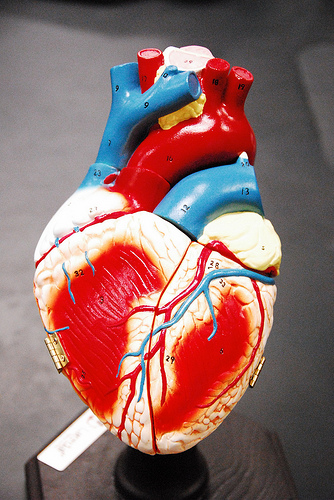Researchers get cardiac muscle cells to grow, repair heart attack damage
Ars Technica » Scientific Method 2012-12-09
Heart attacks cause both long- and short-term problems. In the short-term, the death of cardiac muscle cells can cause a critical drop in the heart's ability to function. Over the long haul, problems arise because the damage is largely repaired by scar tissue, rather than functional muscle. For the most part, once cardiac muscle cells stop dividing (in most species, this occurs shortly after birth), they don't ever start again. That means that once they're lost in a heart attack the damage is essentially permanent.
That's why stem cells are often proposed as a treatment for damaged hearts—they provide a way to create new cardiac muscle cells, essentially by recapitulating the process that creates them as an embryo is developing. But there is a potential alternative route: restarting cell divisions within the remaining population of cardiac muscle cells. Some researchers at the University of Trieste may have found a way to do precisely that.
The team reasoned that regulatory RNAs are able to control the expression of a number of genes at once and, unlike proteins, they're a lot easier to get into living cells. So, they focused on a class of short sequences called micro-RNAs (these recently found their way into headlines due to their role in human evolution). Reasoning that some of them are probably involved in controlling cell division, the authors set out to find those by testing about as many as they could.
Read 8 remaining paragraphs | Comments
